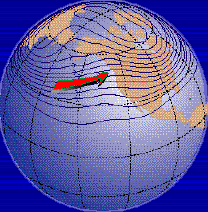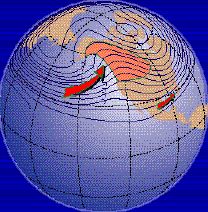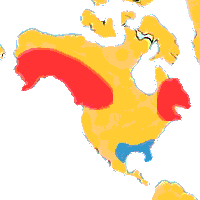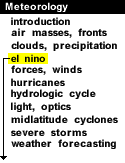
|
During an El Niño year, tropical rains usually centered over Indonesia shift eastward, influencing atmospheric wind patterns world wide. Possible impacts include: a shifting of the jet stream, storm tracks and monsoons, producing unseasonable weather over many regions of the globe. During the El Niño event of 1982-1983, some of the abnormal weather patterns observed included:.
|
|
Drought in Southern Africa, Southern India, Sri Lanka, Philippines, Indonesia, Australia, Southern Peru, Western Bolivia, Mexico, Central America |
|---|---|
|
|
Heavy rain and flooding in Bolivia, Ecuador, Northern Peru, Cuba, U.S. Gulf States |
|
|
Hurricanes in Tahiti, Hawaii |
The 1982-83 El Niño strengthened the upper-level ridge that was present off the West coast of the United States. (This intensification is represented by the increased amplitude of the wave in the right panel below).
| Normal Winter | El Niño Winter |
|---|---|
 |
 |
The amplification led to a warming in the near-Pacific regions of North America, extending from Alaska to the northern Plains of the United States (orange shading).
 |
Simultaneously, the deepening of the winter
upper-level trough (typically found over the eastern
US) produced heavier than normal rains in the
southern states (blue shading).
As a result of the 1982-83 El Niño event, wide spread flooding occurred across the southern United States. |

sea surface temps |
|

economic impacts |



